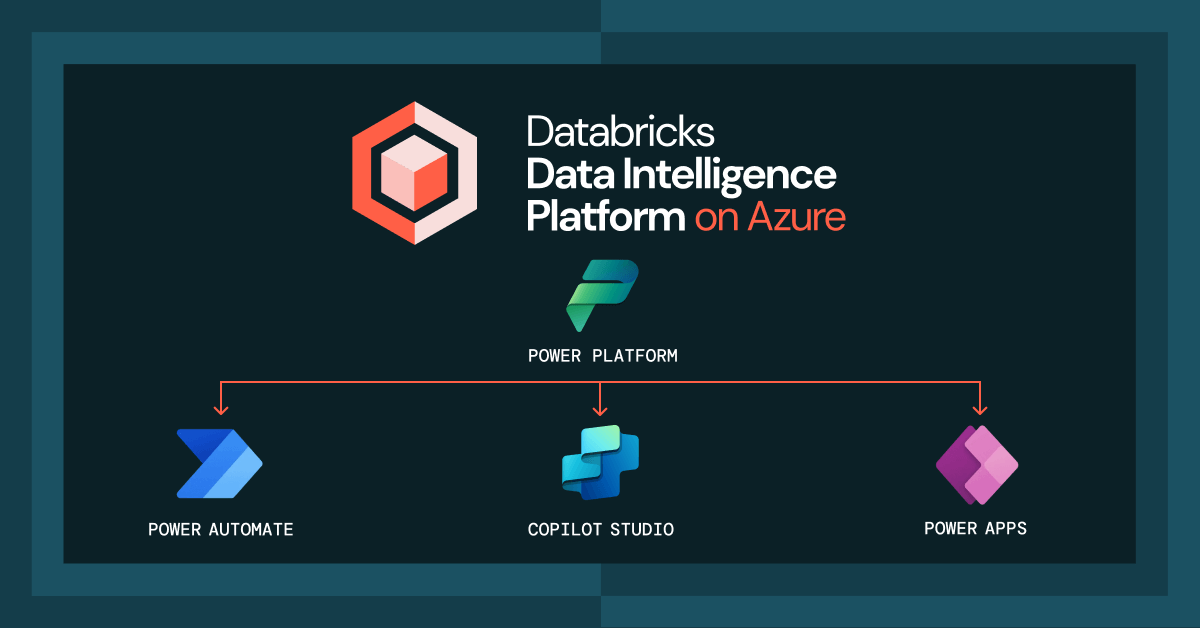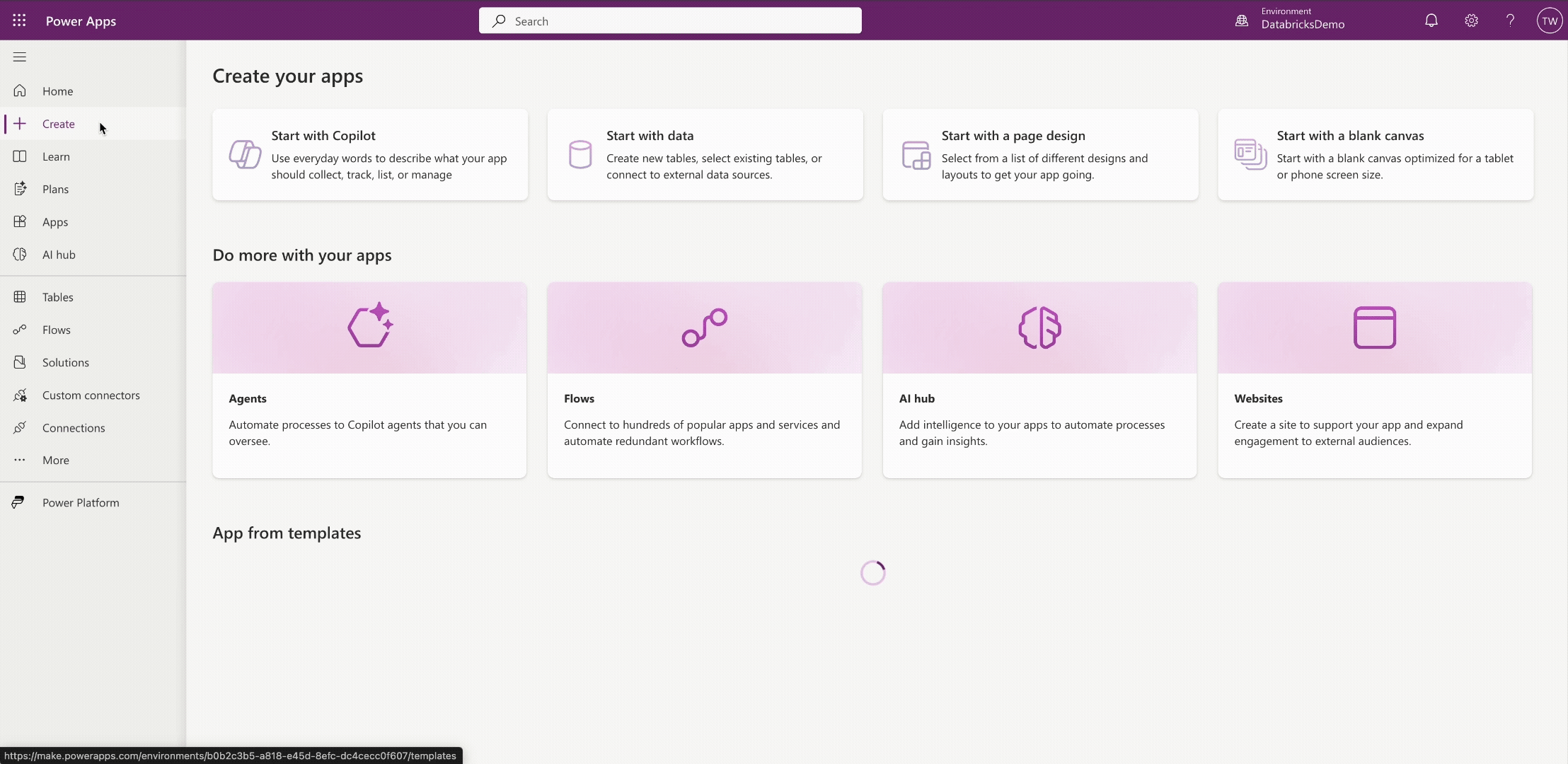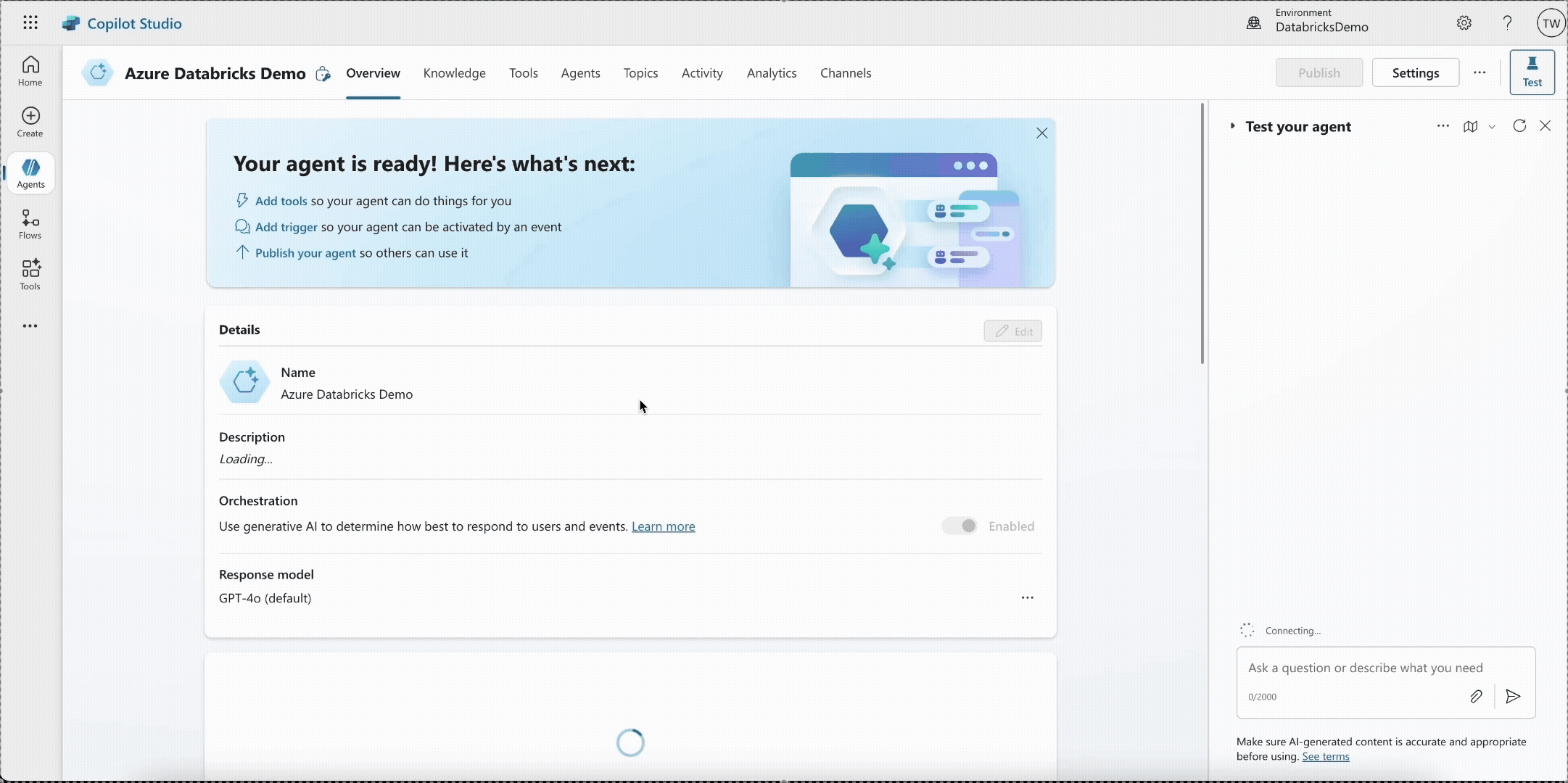Introducing the Azure Databricks Power Platform Connector: Real-Time and Governed Data Access for Power Apps, Power Automate, and Copilot Studio
Power your apps, automation, and Copilot workflows with governed data

Summary
- Maintain governance: power your apps, automation, and Copilot workflows with governed data
- Reduce data duplication: leverage your Azure Databricks data in Power Platform without the need to copy data
- Secure connection: connect Azure Databricks to Power Platform using Microsoft Entra user-based OAuth or service principals
We’re excited to announce the Public Preview of the Azure Databricks connector in Power Platform. The new connector is a game-changer for organizations looking to seamlessly integrate Azure Databricks with Microsoft’s low-code ecosystem-including Power Apps, Power Automate, and Copilot Studio. This connector bridges the gap between advanced analytics and business process automation, enabling secure, governed, and real-time data access - without the headaches of custom connectors or data duplication. This is all made possible by the foundations of the Databricks SQL data warehouse, a product purpose-built for analytics, and Azure Databricks, a first party service fully integrated within the Azure and Microsoft ecosystem.
The Challenge Before: Workarounds, Data Silos, and Governance Gaps
Before this connector, connecting Power Platform applications to Azure Databricks was frustrating. Teams had to rely on custom connectors, REST APIs, or indirect data exchanges through storage accounts and orchestrated pipelines. These workarounds often led to data duplication, required manual maintenance, and were not able to leverage governance provided by Unity Catalog. As a result, this slowed teams’ ability to innovate.
What’s Now Possible: Real-Time, Secure Data for Every Power Platform App
The new Azure Databricks connector solves all of these challenges.
- No Data Duplication: All interactions happen in real time, directly against Azure Databricks tables-eliminating the need for data exports, ensuring a single source of truth.
- Authentication: The connector leverages Microsoft Entra ID (formerly Azure AD) for secure authentication, supporting both user-based OAuth and service principals.
- Governance: Rely on Unity Catalog’s fine-grained access controls directly within Power Platform apps-no dual security models or manual policy syncs required. Auditing capabilities are available through Query History.
- Easy Setup and limited maintenance: From Power Apps, Power Automate, or Copilot Studio, simply select the Databricks connector, authenticate, and start building. No custom API plumbing or maintenance required.
This enables organizations to build data-driven experiences that leverage the full power of their data within Azure Databricks. Let’s take a look:
I. Power Apps: Build low-code canvas apps that can read and write (create, update, and delete) records in real-time.

II. Power Automate: Create workflows that execute SQL commands against your data in Azure Databricks data

III. Copilot Studio: Build custom agents with Azure Databricks as the knowledge source

Solving Real-World Use Cases: Faster Innovation, Maintained Governance, and No Data Duplication
Now, Azure Databricks customers who leverage the Power Platform connector can experience a simplified ability to build Power Platform applications with their data in Azure Databricks.
Transforming Warehouse Safety: Coty’s Power Platform Success Story
Take Coty, who is a global beauty powerhouse known for its iconic brands and bold innovation. They leverage Power Platform to build business-critical Power Apps and automation workflows.
A good example is their application to track warehouse safety incidents, developed by one of their Digital Solution Developers, Victor-Hugo Fantasia, which plays a crucial role in keeping warehouse employees safe. Before Power Platform, warehouse teams used to rely on manual reconciliation across paper forms and siloed Excel files to log safety events. This led to frustration, delays and lost records.
Now with Power Platform, employees can report safety incidents in seconds. If any high-risk incidents are reported, automation workflows immediately trigger notifications to safety leads. All submissions feed real-time dashboards and provide managers a 360-degree view into safety performance.
This simple solution has driven compliance rates up dramatically, cut data reconciliation time, and enabled daily safety reviews, empowering teams to address hazards faster and improve site safety across the board.
“I never thought connecting to our data lake could be as easy as connecting to a SharePoint list. With the Azure Databricks connector in Power Apps, our team can now spin up custom apps to capture and approve planning data, track safety incidents in real time, streamline transportation customer claims, and feed real‑time dashboards using minimal code, with virtually no learning curve. This streamlined approach will significantly reduce implementation time and let us focus on solving business problems faster!”
— Michael Gibson, Supply Chain Digital Solutions Manager, Coty
Empowering Teams with Technology: UK Power Networks’ Wider Call Handling App
Or take UK Power Networks, a leading electricity distributor known for its reliable service and commitment to powering millions of homes and businesses across the UK. In an industry where rapid response and clear communication are crucial, UK Power Networks has embraced technology to support its teams and deliver better outcomes for customers.
A prime example is their Power App developed specifically for Wider Call Handling (WCH), which is a system designed to support call handlers during high demand periods caused by adverse weather. The WCH Power App transforms how UKPN supports affected customers. Instead of relying on manual processes, the app provides an enhanced, streamlined approach to proactively manage communication and assistance with those impacted by outages or disruptions. Call handlers can easily update customers, coordinate responses, and ensure timely information and support, all from a central, user-friendly platform.
“Integrating the Databricks connector within the Power Platform has been game-changing for us at UKPN. It allows us to harness Azure Databricks' superior performance and big data capabilities alongside the agility of low-code solutions, delivering significant value across the business.
This integration has also helped us maintain momentum in our Digitisation strategy, enabling us to seamlessly re-point existing Power Platform deliverables from legacy back-ends to cutting-edge technologies.”
— Karime Slimani, Lead Data Engineer, UK Power Networks
How It Works: Secure, Governed Connectivity-No Custom Code Required
Setting up the Azure Databricks Power Platform connector is designed to be simple and secure:
- Open Power Apps or Power Automate
- Go to the ‘Connections’ page within this application
- Click ‘+New Connection’ and search for Azure Databricks
- Authenticate to Azure Databricks using OAuth or a Microsoft Entra Service Principal
- Start building - canvas power apps, automation workflows, and copilot studio agents with Databricks as a knowledge source
Try It Out: Get started with Azure Databricks Power Platform Connector
The Power Platform Connector is now available as Public Preview for all Azure Databricks customers. Explore more in the deep dive blog here and to get started, check out our technical documentation.
Never miss a Databricks post
What's next?

Product
November 21, 2024/3 min read
